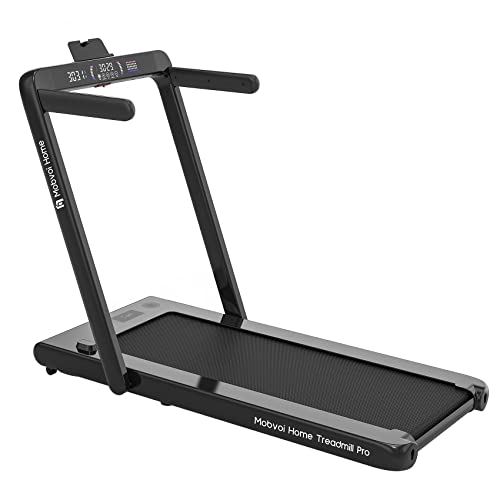How Much Can Walking Machine Experts Make?

The Walking Machine: A Comprehensive Guide to Your Fitness Companion
In today's fast-paced world, where time is a luxury, keeping a constant workout routine can be an obstacle. For many, a walking machine-- commonly called a treadmill-- works as a perfect fitness buddy. This post supplies an extensive look at walking machines, including their advantages, types, upkeep pointers, and often asked concerns.
Why Choose a Walking Machine?
Walking machines provide a practical and efficient method to integrate cardiovascular workout into daily life. Here are several essential benefits:
- Convenience: Walking machines enable people to work out anytime, no matter climate condition or time constraints. They are ideal for busy schedules.
- Versatility: Users can stroll, jog, or perform at their own rate and intensity.
- Safety: Walking machines present a lower threat of injury compared to outside walking or running, particularly for novices or those recovering from injuries.
- Tracking Progress: Many treadmills featured integrated displays that track metrics like speed, distance, and calories burned.
Types of Walking Machines
When thinking about a walking machine, it's vital to pick the best type based on specific physical fitness objectives and area restrictions. Below are the primary kinds of walking machines:
| Type | Description |
|---|---|
| Manual Treadmills | These machines do not have a motor, and users need to walk or run to rotate the belt. |
| Electric Treadmills | Powered by an electric motor, allowing users to set the speed and slope effortlessly. |
| Folding Treadmills | Designed for easy storage, these treadmills can be folded when not in use. |
| Desk Treadmills | Ideal for a double work and workout environment, these compact machines enable walking while working. |
| Incline Trainers | These enable users to replicate uphill walking, enhancing workout intensity and calorie burn. |
Picking the Right Walking Machine
Choosing the right walking machine can substantially impact motivation and effectiveness. Here are some elements to think about:
Key Features to Look For
- Motor Power: A powerful motor guarantees a smooth and consistent workout. For periodic walkers, a 1.5 HP motor is normally enough; for much heavier use, search for 3.0 HP and above.
- Belt Size: A wider and longer belt offers more area for a comfy stride. Standard sizes vary from 16 inches broad and 50 inches long.
- Incline Options: Adjustable incline settings can replicate walking or running uphill, increasing the intensity of the workout.
- Shock Absorption: Good shock absorption decreases the threat of joint injuries and boosts comfort.
- Console Features: Look for built-in exercises, heart rate screens, and connection features like Bluetooth for a more appealing experience.
Spending plan Considerations
Walking machines can be found in a vast array of costs, depending upon features and building quality. Here's a rough budget plan breakdown:
| Price Range | Features |
|---|---|
| Under ₤ 300 | Fundamental manual or small electric treadmills with restricted features. |
| ₤ 300 - ₤ 700 | More sophisticated electric treadmills with slope, medium power motors, and better guarantees. |
| ₤ 700 - ₤ 1500 | Top quality electric treadmills with bigger built-in display screens, comprehensive features, and warranties. |
| ₤ 1500 and above | High-end models using advanced technology, features, and resilient building and construction for major fitness lovers. |
Maintenance Tips for Your Walking Machine
To make sure longevity and optimal performance of a walking machine, consider the following upkeep pointers:
- Regular Cleaning: Dust and sweat can accumulate on the machine and the belt. Clean down the surfaces and tidy the belt routinely.
- Lubrication: Depending on the model, lubing the running belt occasionally can avoid wear and tear. Examine the manufacturer guidelines for recommended lubrication schedules.
- Assessment: Periodically check the machine for loose screws or used parts. Tighten and change as needed.
- Calibration: Occasionally, check the calibration of your machine's metrics to guarantee they supply accurate data.
- Appropriate Use: Follow the manufacturer's suggestions for weight limitations and operational standards.
FAQs About Walking Machines
1. Are walking machines an excellent exercise?
Yes, walking machines provide an outstanding cardiovascular workout, can assist with weight reduction, and enhance general health.
2. How frequently should I utilize a walking machine?
Aim for a minimum of 150 minutes of moderate-intensity aerobic activity weekly, which can quickly be accomplished with regular sessions on a walking machine.
3. Can I reduce weight on a walking machine?
Yes, including a walking machine regimen into a healthy diet plan can promote weight-loss, specifically if integrated with intervals and incline training.
4. Is it safe for seniors to utilize a walking machine?
Yes, walking machines can be safe for elders with low-impact settings and security functions like handrails. Nevertheless, individuals need to seek advice from with their health care supplier before beginning any exercise program.
5. What's the distinction in between a treadmill and a walking machine?
The term "walking machine" generally describes a treadmill planned for walking, while "treadmill" can refer to machines used for different strengths, including running.
With their flexibility and benefit, walking machines can significantly enhance one's physical fitness journey. By carefully selecting the ideal type, guaranteeing appropriate maintenance, and incorporating different workout methods, users can maximize their walking machine's advantages. Just like any exercise program, consistency is essential to accomplishing long lasting fitness results.

